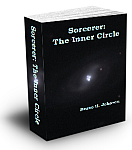<-- previous in series next in series -->
Fiction
The purpose of fiction is to give the audience a powerful emotional experience.
This is short, medium and long fiction as well as anything else in the “creative” realm, such as poetry, music, “fine art”, photography and so on. If there’s no emotion invoked, the recipient will treat it as ho-hum and probably ignore any other works you offer.
Emotion is a result, not a cause. It’s your job to make the audience snort soda/coffee out through his nose, flood his eyes with tears of joy and/or sorrow, send chills up and down his spine, and to make him feel he’s involved with the story/picture/song.
This task is done through communication.
Cause, distance and effect with duplication and understanding which produce emotion. The message could be written/spoken words, audio (music), visual, smell, or any other of the senses which you can use to create an emotional response.
Art
Art is a word which summarizes the quality of communication (L. Ron Hubbard)
This leads us to the conclusion that a person who has good communication quality could be a successful artist.
The Craft
The Craft of writing (or other art) involves the application of communication techniques to enable you, the artist/writer, to produce the desired emotion in your audiences. The Craft is pretty well-defined now and is easily available.
Art and The Craft
How good does your Craft have to be to produce art?
Technical expertise itself adequate to produce an emotional impact. (L. Ron Hubbard)
As Tech Writers, programmers, and other tech geeks, we are involved with this to a great degree. The closer your work is to the end-user, the more your communication has to be high-quality.
Tech Writers, instructors, Documentation Specialists, etc., who deal directly with the end user already have an edge. Part of your requirements and design deal with who your end users are including predominant gender (or not), education and culture. The business rules your company uses and its style guides (if any) will reflect the acceptable tone the documentation must have.
Some documents are designed to be drier than dust, often from a legal requirement. Others are much looser, perhaps in a User Guide. Your style can be dry, loose, impersonal, personal, anything to get the job done. The more you use your communication quality to give your users a higher emotion (such as satisfaction rather than boredom), the more effective and successful it is.
You’ve got the start of art already, then. Part of the Craft is for you to deliberately attempt to produce a specific emotion to a much higher degree than you do now in “formal” technical writing. When you have your Craft well enough under control to knowingly produce an emotional impact (hopefully, the one you choose), the better chance your art has of being successful.
Take a look now at some of your current tech writing, programming or what have you which involves a user interface. How do you produce an emotion in your target audience which would make them "happy" to use it? How could you change that emotion?


